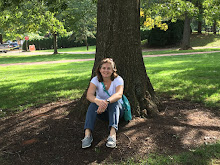Documentation refers to notes, pictures, drawings, anything that records a place or event and what is happening. Artist and author, Keri Smith spoke at the American Visionary Art Museum event. She draws of inspiration from artists who are collectors of objects, actions, or experiences and focuses on how artists see potential in the world around them and create meaning out of everyday experiences. She connects the role of the artist with that of an ethnographer. Ethnography is defined as "the documentation and analysis of a particular culture through field research." Like an ethnographer, an artist is a keen observer of the world and culture they inhabit. Artists record impressions, look for patterns, organize objects and ideas, try new combinations and reflect on what they create. Practicing these artistic habits of field research can inspire new appreciation for the beauty and wonder in the everyday world around us.
In the studio, we find it helpful to turn this documentary observing eye toward our own work and the explorations of the children with materials. It is a way to do field research into the culture and community that is created by individuals and groups working in the studio setting. We find that by taking pictures of the process, we are able to go back and see more of what happened, to reflect and form hypotheses about what might be interesting to work on next. It renews our sense of wonder in the creative process and the ideas, intentions and capabilities of children.
 The handmade paper "softball" was created by Fort Hunt Youth Athletic Association softball players in the 9 and under division at their annual picnic.
The handmade paper "softball" was created by Fort Hunt Youth Athletic Association softball players in the 9 and under division at their annual picnic. The process began with layering single sheets of handmade paper on top of a circular table covered in canvas. The sheets were formed from recycled paper pulp using a circular mold made from an embroidery hoop with a screen stretched across the top.
The process began with layering single sheets of handmade paper on top of a circular table covered in canvas. The sheets were formed from recycled paper pulp using a circular mold made from an embroidery hoop with a screen stretched across the top.









